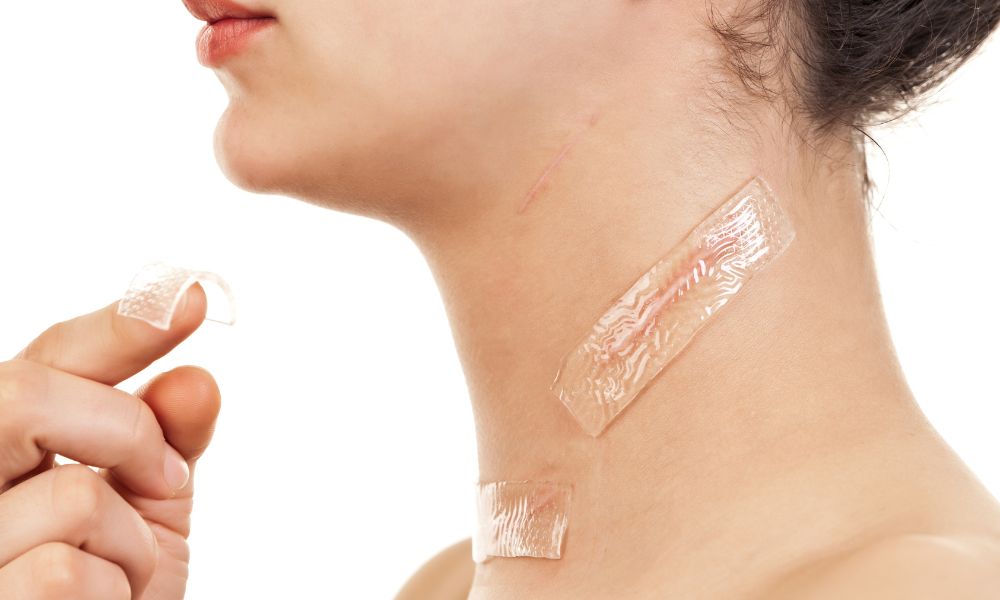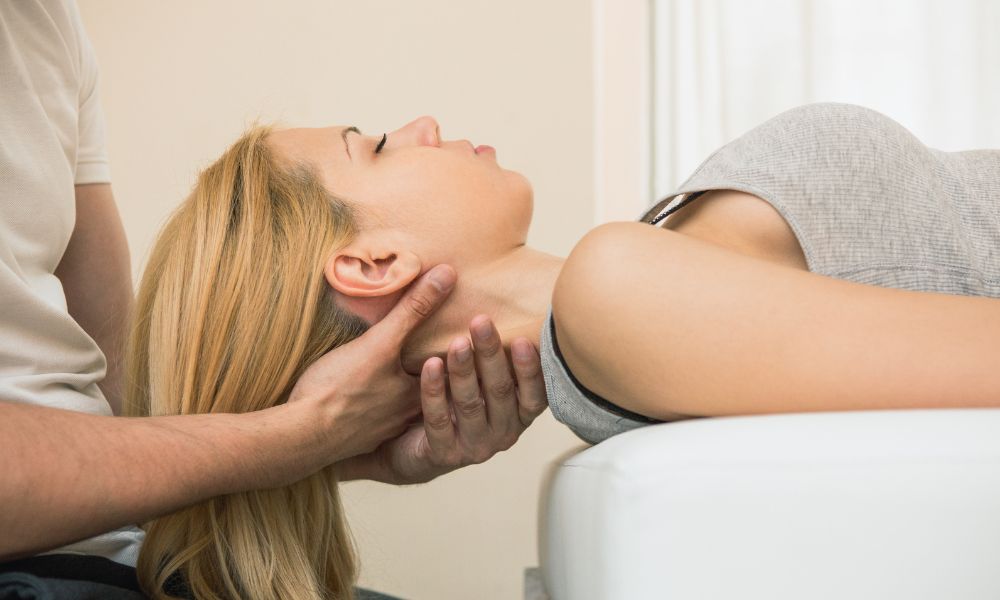Shockwave therapy, also known as extracorporeal shockwave therapy (ESWT), is a non-invasive treatment that uses sound waves to treat various conditions, from plantar fasciitis and Achilles tendon pain to tendon problems and shin splints. Originally developed to treat kidney stones, it is now commonly used to improve pain and promote healing in injured tissues, particularly in the soft tissues of the body.
Many patients describe feeling relief during treatment sessions, but the healing process continues long after the final treatment. Knowing what to do after shockwave therapy is essential for ensuring long-term success and reducing pain effectively.
Post-treatment care is essential for making sure the body’s healing process proceeds smoothly. It helps manage any discomfort and supports healing in the affected area. While shockwave therapy works by increasing blood flow and promoting healing at the injury site, what you do after each session can significantly impact the treatment effect. Following the right aftercare advice can help you return to normal activities sooner while avoiding complications.
Immediate Post-Treatment Steps
Right after shockwave therapy, most patients experience mild discomfort or soreness in the treated area. This is normal and part of the body’s natural response to the therapy. As the treatment uses compressed air to deliver pressure waves into the injured tissue, it stimulates blood circulation and nerve endings, which may result in temporary discomfort. Your healthcare provider may apply ultrasound gel during the session, and you might feel some warmth in the treated area afterward.
Immediately after your session, keep these key steps in mind:
- Rest the treated area to avoid straining it further.
- Apply ice therapy if there’s any swelling or discomfort.
- Avoid anti-inflammatory medications as they can slow the healing process.
- Monitor the treated area for signs of increased pain or discomfort, and consult your provider if necessary.

Pain Management
It’s common to experience some discomfort in the days following shockwave treatment. This pain is typically mild and can be managed with simple methods. Since shockwave therapy works by triggering the body’s healing process, mild discomfort is a sign that the therapy is working as intended. Pain in areas such as the Achilles tendon or tendon pain around the plantar fascia is not uncommon but should subside after a few days.
To manage pain after days of treatment, you can use ice therapy on the treated area or take over-the-counter pain relief medications as recommended by your physical therapist. If you experience increased pain or discomfort beyond what’s typical, consult with your provider to ensure everything is progressing as expected.
Activity Restrictions
In the days following your shockwave sessions, it’s crucial to avoid activities that could aggravate the treated area. High-impact exercises, such as running or jumping, should be avoided for at least 48 hours. Activities like tennis, or any that put strain on the Achilles tendon, calf muscle, or hamstring, should be postponed to give the treated tissues time to recover. Your physical therapist may recommend activity modification based on your specific injury, ensuring you avoid stressing the injury site.
While high-impact exercises are off-limits immediately after therapy, light exercise, such as gentle stretching or walking, may be safe depending on your condition. Exercise therapy can be gradually introduced to help maintain blood flow and promote healing. Shockwave therapy promotes healing in soft tissues, and by gradually resuming physical activity, you can enhance the long-term success of your treatment without risking re-injury.
Follow-Up Care
Follow-up appointments are an essential part of the recovery process after shockwave therapy. These visits allow your healthcare provider to assess the progress of the healing process, monitor any lingering discomfort, and adjust your treatment plan if necessary.
During follow-up visits, discuss any concerns you have, including lingering pain, swelling, or discomfort in the treated area. You should also provide feedback on how the shockwave therapy sessions are impacting your overall mobility and quality of life. Your provider may suggest adjustments to your treatment plan, including additional sessions or changes to your physical activity routine, based on how well your body is healing.
Managing Swelling and Bruising
Some swelling and bruising are normal after shockwave therapy, particularly in areas like the Achilles tendon or the plantar fascia, where blood flow is increased. This is part of the body’s natural healing response, and most patients experience mild to moderate swelling for a few days after the session. The treated area may also show some bruising, especially if the therapy is applied to soft tissues that are prone to injury.
To minimize swelling, consider applying ice therapy to the affected area for short periods during the day. Gentle compression or elevation of the injury site may also help reduce inflammation. Avoid high-impact activities that could further aggravate the treated area, and give your body time to rest and recover.
Exercise and Physical Therapy
Can you exercise after shockwave therapy? Engaging in appropriate physical activity after shockwave therapy is important, but it must be done carefully to avoid disrupting the healing process. Light exercise, such as walking or gentle stretching, is often recommended in the days following treatment. These exercises help improve blood circulation and maintain flexibility without putting too much strain on the injured area. However, avoid high-impact exercises like running or jumping until you have fully healed.
Physical therapy plays a vital role in recovery, helping to strengthen the treated area and restore mobility. Your physical therapist will design an exercise therapy plan tailored to your needs, focusing on rebuilding strength in the injured tissues.

Diet and Hydration
Your diet can have a significant impact on how well your body recovers after shockwave therapy. Consuming a balanced diet rich in vitamins and minerals helps support the body’s healing process. Nutrients such as vitamin C, omega-3 fatty acids, and protein are particularly important for tissue repair and reducing inflammation. Here are some dietary recommendations to promote optimal healing:
- Vitamin C-rich foods: Oranges, strawberries, bell peppers
- Omega-3 fatty acids: Salmon, flaxseeds, walnuts
- Lean proteins: Chicken, turkey, tofu
- Anti-inflammatory foods: Leafy greens, berries, turmeric
In addition to a balanced diet, staying hydrated is a must. Water aids in blood circulation and tissue repair, so drinking plenty of water throughout the day helps your body recover more efficiently from treatment. Proper hydration supports the elimination of waste products and the delivery of essential nutrients to the injured area.
Skin Care and Hygiene
Caring for the skin in the treated areas after shockwave therapy is important to prevent irritation and infection. Since the skin may be more sensitive following treatment, it’s important to keep the area clean and avoid harsh chemicals or irritants. Use gentle, fragrance-free cleansers and moisturizers to keep the skin hydrated without causing further sensitivity.
Avoid applying any lotions or oils that contain strong chemicals to the treated area unless specifically recommended by your healthcare provider. To minimize the risk of infection, ensure that the treated area is kept dry and free from excessive sweating or moisture.
Pain and Sensation Monitoring
Monitoring your pain levels and sensations is a critical part of post-treatment care. While mild discomfort is expected after shockwave therapy, you should keep an eye on how the pain evolves over the days following your session. Most patients experience a reduction in pain over time as the treatment stimulates the body’s healing process.
However, if the pain worsens or new sensations such as numbness or tingling occur, it may be time to seek medical advice. If you notice swelling that doesn’t subside, intense pain in the treated area, or any symptoms that seem unusual for your condition, contact your healthcare provider for guidance. Timely intervention can help address any underlying issues and ensure a smooth recovery.
Long-Term Recovery Goals
Recovery after shockwave therapy takes time, and it’s important to set realistic goals to track your progress. Each person’s healing timeline will differ depending on factors like the severity of the condition and how well the body responds to treatment. Typically, patients experience significant pain reduction and improved mobility over the course of several treatment sessions, but the healing process continues even after therapy is completed.
Setting recovery milestones, such as increased range of motion or decreased reliance on pain relief methods, can help you measure your progress. Be patient with your body and remember that healing soft tissues takes time.
Emotional and Mental Well-Being
Many patients experience stress, anxiety, or frustration during the healing process, especially if the recovery takes longer than anticipated. Shockwave therapy may offer hope for pain relief, but managing expectations is key to maintaining a positive mindset.
To help manage stress and anxiety, consider incorporating relaxation techniques like deep breathing exercises, meditation, or light physical activity into your daily routine. Keeping a journal of your progress and discussing any emotional concerns with your healthcare provider can also support your mental well-being. Balancing your physical and mental recovery can lead to a more holistic healing experience.
Alternative Therapies and Complementary Treatments
Aside from shockwave therapy, there are several alternative and complementary therapies that may support your recovery. Physical therapy is commonly recommended to improve mobility and strength in the treated area, particularly for tendon pain or soft tissue injuries. Techniques like massage therapy or acupuncture may help promote blood circulation and relaxation, contributing to the healing process. These therapies can work alongside shockwave therapy to enhance pain relief and improve overall outcomes.
Combining treatments under the guidance of your healthcare provider can offer better results. For instance, incorporating exercise therapy after shockwave sessions or using modalities such as ultrasound or laser therapy may further promote healing.
Troubleshooting Common Issues
While most patients experience relief after shockwave therapy, unexpected complications can occasionally arise. If you notice increased pain, persistent swelling, or signs of infection in the treated area, it’s important to address these issues promptly. Mild discomfort is normal, but significant changes in sensation, such as numbness or excessive swelling, should not be ignored.
If complications do arise, reach out to your healthcare provider for guidance. They may suggest modifying your treatment plan or exploring additional therapies to support your recovery. Regular communication with your provider ensures that any issues are resolved quickly and effectively, preventing further delays in your healing process.
Maintaining Results
Once you’ve completed your shockwave therapy sessions, maintaining the benefits of treatment is crucial for long-term success. Staying active with regular, light exercise helps maintain blood flow to the treated area and supports the body’s ongoing healing process. Physical therapy may continue to play a role in maintaining strength and mobility, especially if you’re recovering from tendon issues like Achilles tendinopathy or plantar fasciitis.
Adopting lifestyle adjustments, such as proper footwear for those dealing with foot or ankle pain, or maintaining a balanced diet to support tissue repair, can make a significant difference in sustaining the benefits of therapy. Avoiding high-impact activities or making modifications to your daily routines will help reduce the likelihood of re-injury
Successful Recovery After Shockwave Therapy
Recovery from shockwave therapy involves more than just attending treatment sessions. By following proper aftercare, managing pain effectively, staying active within safe limits, and exploring complementary therapies, you can maximize the benefits and achieve long-lasting results. Remember, healing takes time, but with the right steps and guidance, you can look forward to an improved quality of life and reduced pain. Stay committed to your recovery plan and consult your healthcare provider with any concerns along the way.




